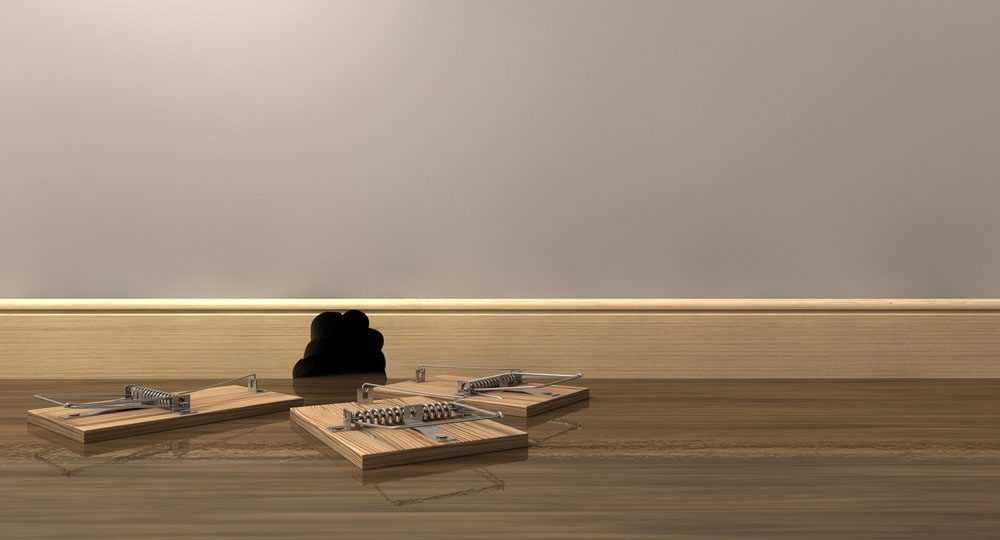You keep setting mouse traps. You’ve read all the directions. You’ve used every type of bait you can think of—all variety of cheeses, peanut butter (both crunchy and creamy), catnip, snickers, ding-dongs, ho-hos, stove-top stuffing.
But those crafty little critters either:
- Have the audacity to ignore your hard work and avoid the trap, or
- Somehow get the bait without triggering it.
You’ve just realized you’re running a self-serve mouse restaurant. It’s kind of like you’re in a Looney Tunes cartoon, and Speedy Gonzalez is just making you look the fool.
How can you keep those darn mice from pooping all over your kitchen, then laughing all the way to their nest with your $50 Gruyere cheese sampling?
What Are You Doing Wrong?
Well, first, stop using super expensive cheese. That’s just silly.
Second, don’t feel bad. Mice are surprisingly clever. They are trying to sneak away with your bait. It’s free food, after all. And because mice are pretty good at learning and adapting, they can catch on to what you’re doing.
Then, those sneaky little critters go back to their nests and communicate their best mouse-trap hacks to their buddies using a series of squeaks, tail shakes, and urine signals—that’s right, urine signals.
All Hope is Not Lost—You Can Outsmart Your Mouse Population
Yes, mouse population. We regret to inform you, that if you’ve seen one, or even just the evidence of one, you’ve got a population. Mice are social creatures. And they breed like . . . well, like mice.
A mouse can start reproducing as early as 6 weeks and can have 5-10 litters a year. You don’t have to be a math major to figure out that you could have a problem on your hands pretty quick.
Here are Common Mouse Trap Mistakes You Might Be Making (And How to Fix Them):
- You are touching the mouse trap with your bare hands. Mice have a remarkable sense of smell. And your scent on the mouse trap could be the reason they are avoiding it. So when you are setting your traps, use gloves. It will keep your manly (or womanly) scent off.
- Your traps look suspicious. Mice are skittish and can be suspicious of new things. So try introducing the trap without setting it. That’s right, bait your trap as usual, but don’t set it. Let the mice get nice and cozy with the free meal-delivery machines. Then set your traps and see what happens.
- You are using the wrong bait. Saturday morning cartoons taught us that mice like holey cheese. But mice actually prefer nuts, seeds, and sweets. The best baits are sweet and sticky—like nut butters and maple syrup. But chocolate, bacon, soft cheese, or sticky gum drops can also work. To sweeten the deal and make sure little mousy doesn’t just snitch and run, add a seed to the center of your sticky bait. This will tempt them further into the trap. The further in, the less likely to escape.
- You are using too much bait. If you load up your mousetrap with too much bait, it’s easy for a mouse to grab and run without springing the trap. Pea-sized bait is all you need.
- Your “location, location, location” is no good. Make sure you have your traps where mice will find them. They leave evidence (poop) of where they’ve been, so let the droppings be your guide. Because mice have a fear of wide-open spaces, they will scamper along the walls and places they can stay hidden. Always place your traps next to walls or in concealed places along mouse runs.
- You only have one trap. Because you likely have a family of mice living in your walls, crawl space, or other sheltered area, you should set multiple traps. Space them out every 2 to 3 feet in high-traffic mouse zones. Then be ready for a big morning.
- You haven’t done any mouse-in-the-house prevention. Do everything you can to prevent mice from coming into your home. Mice can squeeze through openings as small as a quarter of an inch. Do some inspection to see where they might be entering. Look for cracks and openings around plumbing, in walls, and around doorways. Then plug those areas with steel wool. Remember that easy food will attract mice. Sweep up crumbs, wipe down counters, take out your trash, don’t leave pet food out overnight, and store grains and cereals in air-tight containers.
How to Know When You Need Professional Pest Control Help
Mice will not leave your home on their own. If you see evidence of mice, you need to take care of it before it gets out of control.
Besides just being “icky,” mice can cause home and business owners all sorts of problems. They can be carriers of dangerous diseases. They will chew through just about anything looking for materials for their nests. Let them be, and you risk damage to furniture, cabinets, appliances, and even wiring, which puts you at risk for a fire.
Everyone has a different threshold for what they are willing and able to do to get rid of mice. If your mouse problem is overwhelming you, or if you just don’t want to deal with it yourself, PURCOR can help.
Need help getting rid of mice? Call PURCOR now for your peace of mind!
"*" indicates required fields
"*" indicates required fields




